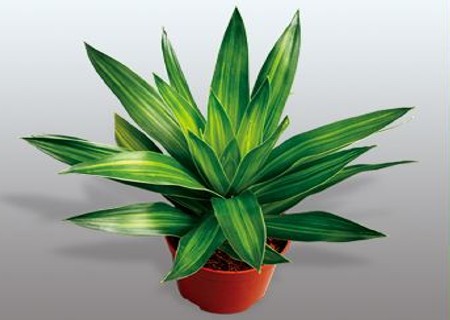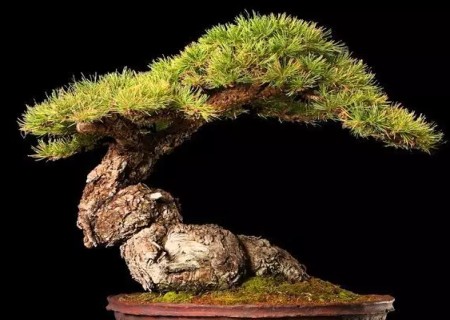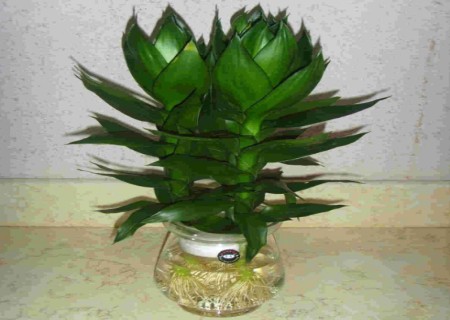Culture methods of potted Lily Bamboo
The leaves of lily bamboo are bright green, and a golden stripe is distributed in the middle of the leaves, which will blossom as long as they are well maintained and managed. It's just that the flowers of the lily bamboo are relatively small, but the inflorescences are longer. A lily bamboo potted at home is often a symbol of wealth and auspiciousness, and it can also be planted as a foliage pot, so potted friends who pay more attention to home fengshui and environmental protection like to raise a pot.

Nowadays, people like to add some green meaning to their homes, potted lily bamboo is a good choice, its leaves are elegant, free and easy, and strong shade tolerance, so it is very suitable for potted indoor foliage, favored by people. So, how to raise potted lily bamboo? Next, the editor will share with you the culture methods of potted lily bamboo.
1. Soil
Lily bamboo has a strong ability to adapt to the soil environment, so it can grow in both clayey soil and sandy loam. But lily bamboo prefers loose, fertile and well-drained soil, especially if the soil is rich in humus. As a family potted plant, it is recommended to use rotten leaf soil mixed with river sand or burnt slag.
Second, lighting
Although lily bamboo has a strong ability to tolerate shade, it also likes light, but it is necessary to avoid exposure in summer when the sun is strong. It can be provided with sufficient light in other seasons, and it is often placed in the position where the windowsill can receive light for breeding. However, if there is a long-term lack of light, the golden stripes on its leaves may become lighter or even disappear, which will inevitably reduce its ornamental effect, so we need to maintain it carefully.
Third, temperature
Lily bamboo grows best at the temperature of 20-30 ℃, but shading and cooling measures must be taken in summer when the temperature is too high, especially in the hot and dry environment of more than 30 ℃, otherwise it is easy to bake the plant and affect its growth. When the temperature is too low in winter, necessary warm measures should be taken to keep the temperature not lower than 10 ℃ as far as possible, otherwise it is easy to frostbite plants, because this plant is not cold-resistant.
Fourth, watering
Lily bamboo has a certain tolerance to mild drought and flood, that is, it has double tolerance. Mild drought and humidity generally do not cause great harm to it, so the requirement of moisture is not strict. Watering adheres to the principle of not drying and watering thoroughly, that is, wait until the basin soil dries before watering, which is more conducive to plant growth. Because the alternation of dry and wet can ensure that the branches and leaves of the plant are thicker, the leaf color is brighter, and the ornamental effect is better.
5. Fertilization
The nutrient demand of potted lily bamboo is not obvious, except that it can supplement nutrients through fertilization during the growing period, it can not be topdressing at other times. And the choice of fertilizer is not very picky, it can be chemical fertilizer or organic fertilizer, but fertilization should adopt the principle of frequent application of thin fertilizer, and timely watering after fertilization to achieve dilution, so that the plant can be absorbed more fully.
6. Pruning
Potted lily bamboo can sprout new branches from the base, so as long as there is an adequate supply of water and fertilizer, it generally grows very luxuriantly. However, in order to improve the ornamental, we also need to prune it properly. Lily bamboo not only has strong germination ability, but also resistant to pruning, but in order not to affect the normal growth of the plant, it is suggested to add some water and fertilizer before and after pruning, and the newly germinated branches and leaves will grow better after pruning. The pruning of lily bamboo is not like most plants to promote its germination of more lateral branches, but for shaping, in order to make the plant more beautiful. (written by: laughing Book 2017-08-14 23:05)
Time: 2019-05-30 Click:
- Prev

Maintenance Technology of Pine Bonsai
Most of the pine trees in the field grow in the environment of high altitude and poor soil, and they have strong ability to tolerate drought and barren, so they can grow well even without fertilization. As a potted pine, in order to promote its rapid growth in order to meet the needs of modeling.
- Next

How to manage the hydroponic Culture of Lily Bamboo
Potted lily bamboo is widely used in family pot planting because of its high ornamental effect. Its leaves are chic and elegant, strong shade tolerance, very suitable for indoor leaf appreciation, not only that, but also can be used as a hydroponic appreciation! Lily bamboo is very popular because of its bright leaf color and elegant plant shape.
Related
- Fuxing push coffee new agricultural production and marketing class: lack of small-scale processing plants
- Jujube rice field leisure farm deep ploughing Yilan for five years to create a space for organic food and play
- Nongyu Farm-A trial of organic papaya for brave women with advanced technology
- Four points for attention in the prevention and control of diseases and insect pests of edible fungi
- How to add nutrient solution to Edible Fungi
- Is there any good way to control edible fungus mites?
- Open Inoculation Technology of Edible Fungi
- Is there any clever way to use fertilizer for edible fungus in winter?
- What agents are used to kill the pathogens of edible fungi in the mushroom shed?
- Rapid drying of Edible Fungi

